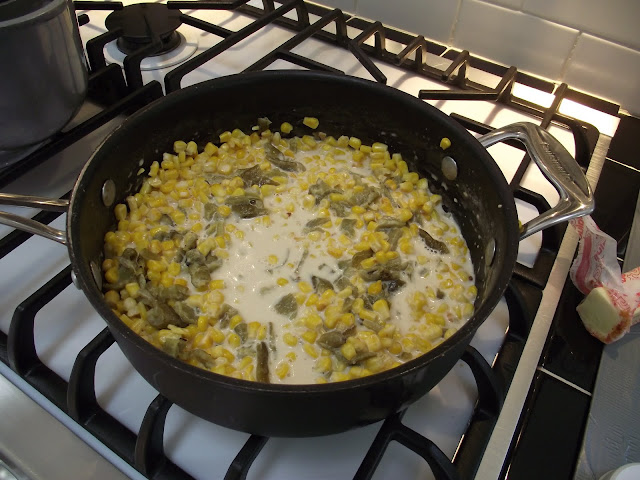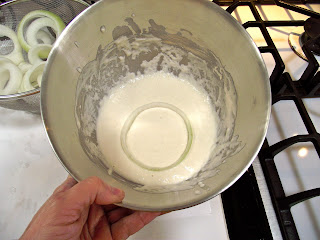I love pie. So did my Dad. He was fond of all kinds of pie, but chocolate pie was a special treat. And I love any recipe that will stick in my pathetic, junk-filled brain. This one will.
So here is how to make a cream pie. Any cream pie. It can be chocolate, banana, coconut, or lemon, depending on how you flavor it. For coconut, add shredded coconut and coconut flavor, maybe a little rum. For banana, add sliced bananas and a little nutmeg. For lemon, lemon juice and lemon flavor or zest, for butterscotch add caramel, and so on.
And for chocolate, add cocoa. Lots of cocoa. I like to combine the new "dark" Hershey's with the regular, but you can experiment with different variations.
The nice thing about this recipe is there is no "tempering" or straining or any of that bother. You are going to end up with a pie, not a sauce, for Pete's sake!
 Step 1. Bake a pie crust. Prick the bottom. Hot oven, around 375. I use heavy "wachas" for pie weights, but some people use beans or nails or a chain. When it's cooked and lightly browned on the edges, about 15 minutes, take it out.
Step 1. Bake a pie crust. Prick the bottom. Hot oven, around 375. I use heavy "wachas" for pie weights, but some people use beans or nails or a chain. When it's cooked and lightly browned on the edges, about 15 minutes, take it out.  Step 2. In a heavy pan, add 3 cups of milk. Mix in 1/3 c. of cornstarch, and 2/3 cup of sugar. Are you seeing a pattern here? Also add 3 pinches of salt, and 3 egg yolks and 3 T. of butter. Mix well with a whisk. Now you can turn on the heat.
Step 2. In a heavy pan, add 3 cups of milk. Mix in 1/3 c. of cornstarch, and 2/3 cup of sugar. Are you seeing a pattern here? Also add 3 pinches of salt, and 3 egg yolks and 3 T. of butter. Mix well with a whisk. Now you can turn on the heat.Step 3. Add the cocoa. For this very chocolate pie, I'm adding 1/3 cup of dark cocoa, and 1/3 c. of regular. The cocoa will float on the top, and that's okay. Don't be alarmed! If you are making a banana or coconut or butterscotch pie, add the banana or coconut or caramel right after it thickens.
Step 4. Heat it slowly and whisk a lot. You don't have to whisk it continuously, but don't wander off too far.
Step 5. When it gets hot enough, it will thicken up and all the cocoa will be melted and incorporated into the pudding. Take it off the heat and keep stirring until the moment you pour it into the baked crust. Let it set and cool. Put it into the refrigerator and put whipped cream all over the top before serving.
Thank you, Mrs. Hastings, for all those glorious pies you made for the scruffy little schoolchildren of Anthony Elementary! This is lovingly posted in your memory.





































































